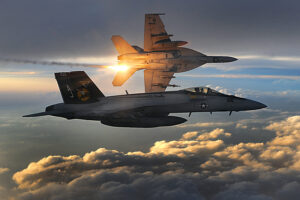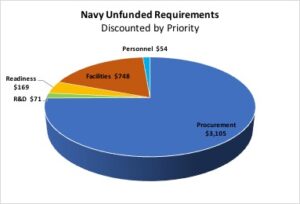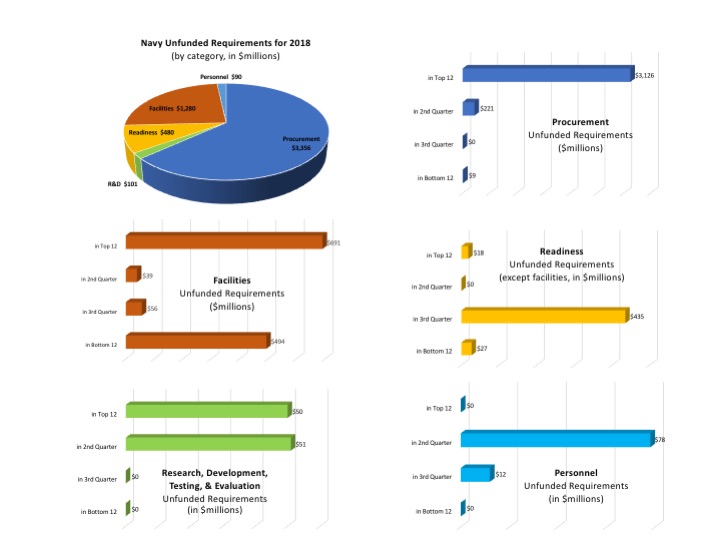Aircraft Dominate Navy Unfunded List; Still No New Ships
Posted on

WASHINGTON: New aircraft make up half the Navy’s $5.3 billion unfunded requirements list of items that didn’t fit in the 2018 budget request. But while the wishlist includes several upgrades to existing vessels, as well as new landing craft and barges, it doesn’t ask for any new warships.

Navy Super Hornets deploy flares over Afghanistan.
Instead of ships, the unfunded requirements list prioritizes aircraft: $739 million for 10 F/A-18E/F Super Hornet fighters takes first place, followed by $1 billion for six P-8A Poseidon reconnaissance planes and $540 million for four F-35C Joint Strike Fighters. The fourth and fifth items are for upgrades to the Navy’s long-neglected infrastructure of shore facilities, reflecting military leadership‘s desire to patch major holes in readiness. Overall:
- about $3.4 billion of the request, or 63 percent, goes for weapons procurements. (The way the items are listed means this sum includes a small amount of R&D funding as well). Of that, the lion’s share, $2.7 billion, goes to buy new aircraft: the F-18s, P-8As, and F-35Cs, plus four cargo variants of the V-22 Osprey.
- $1.3 billion, 24 percent, goes for facilities, counting both readiness funding (from the Operations & Maintenance account) and Military Construction (MILCON).
- $480 million, 9 percent, goes for other readiness needs, $330 million of it for aviation: logistics, spare parts, and general support.
- $101 million, 2 percent, goes to research, development, testing, & evaluation (RDT&E). (That’s not including small RDT&E sums wrapped up in weapons upgrades we counted as procurement).
- Just $90 million, 2 percent, goes to military personnel, filling holes in short-handed units rather than growing the force.
 If you break the list up by priority ranking, you see some striking patterns. Almost all the procurement requests, $3.1 billion, are in the top 12 items, with the best odds of passing. What little R&D money there is almost all comes in the top half of the list (items #1-24). Personnel requests, however, are clustered in the middle, with middling odds of being funded. Facilities is split: 53 percent of the request are in the top 12, 38 percent in the bottom 12, very little in the middle. Non-facilities readiness requests are almost entirely in the bottom half.
If you break the list up by priority ranking, you see some striking patterns. Almost all the procurement requests, $3.1 billion, are in the top 12 items, with the best odds of passing. What little R&D money there is almost all comes in the top half of the list (items #1-24). Personnel requests, however, are clustered in the middle, with middling odds of being funded. Facilities is split: 53 percent of the request are in the top 12, 38 percent in the bottom 12, very little in the middle. Non-facilities readiness requests are almost entirely in the bottom half.
Specifically, when you discount lower-priority requests, procurement’s share jumps even higher, to 75 percent; facilities drops to 18 percent; other readiness to four percent; R&D stays at 2 percent; and personnel falls to one percent of the request.
Yet despite all that emphasis on procurement, there are still no new ships. Congress will want to change that.

Subscribe to our newsletter
Promotions, new products and sales. Directly to your inbox.
